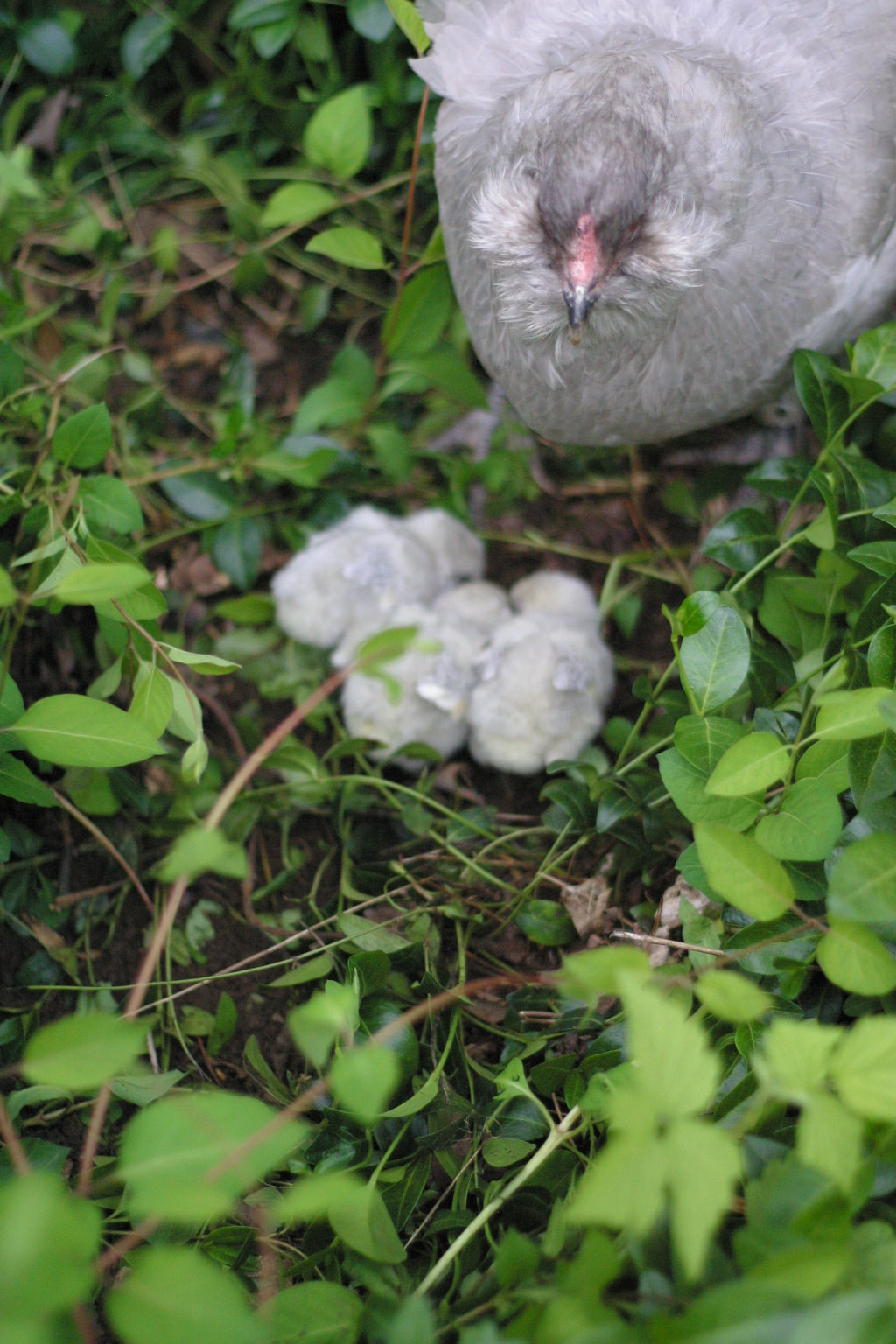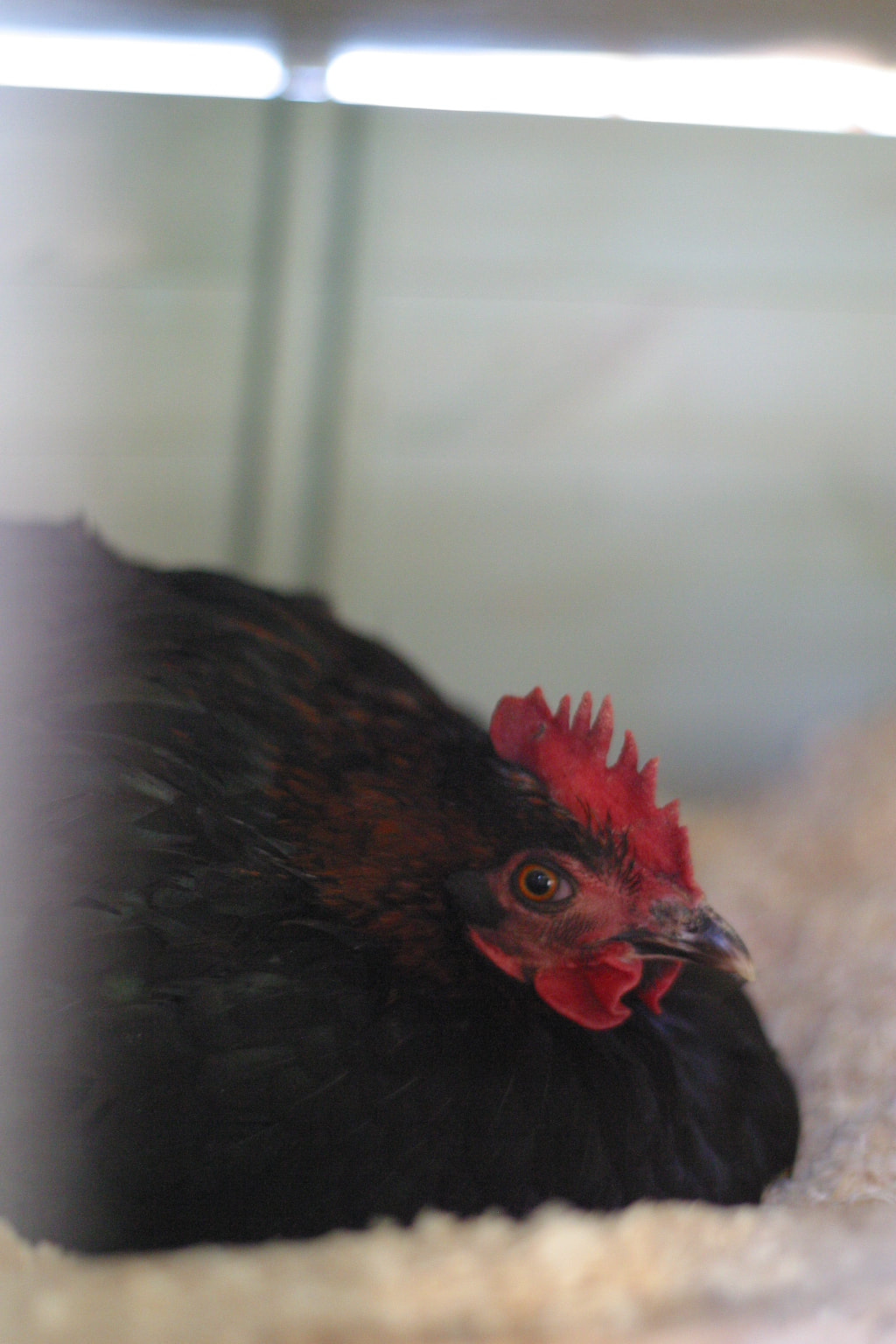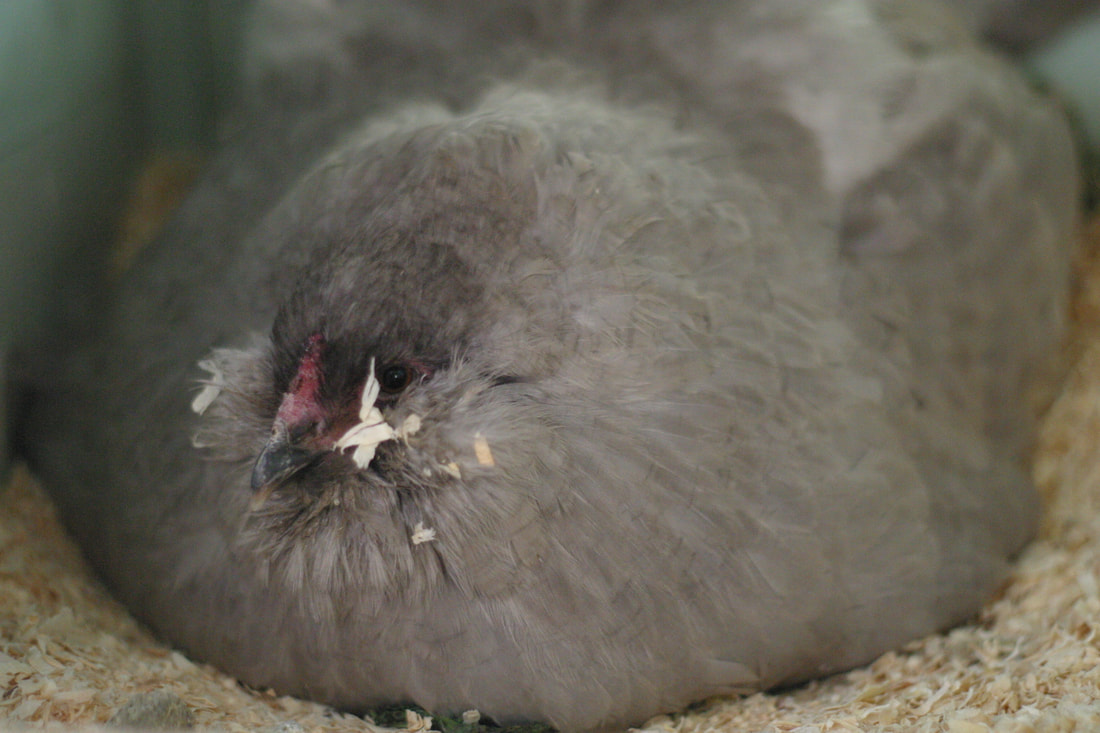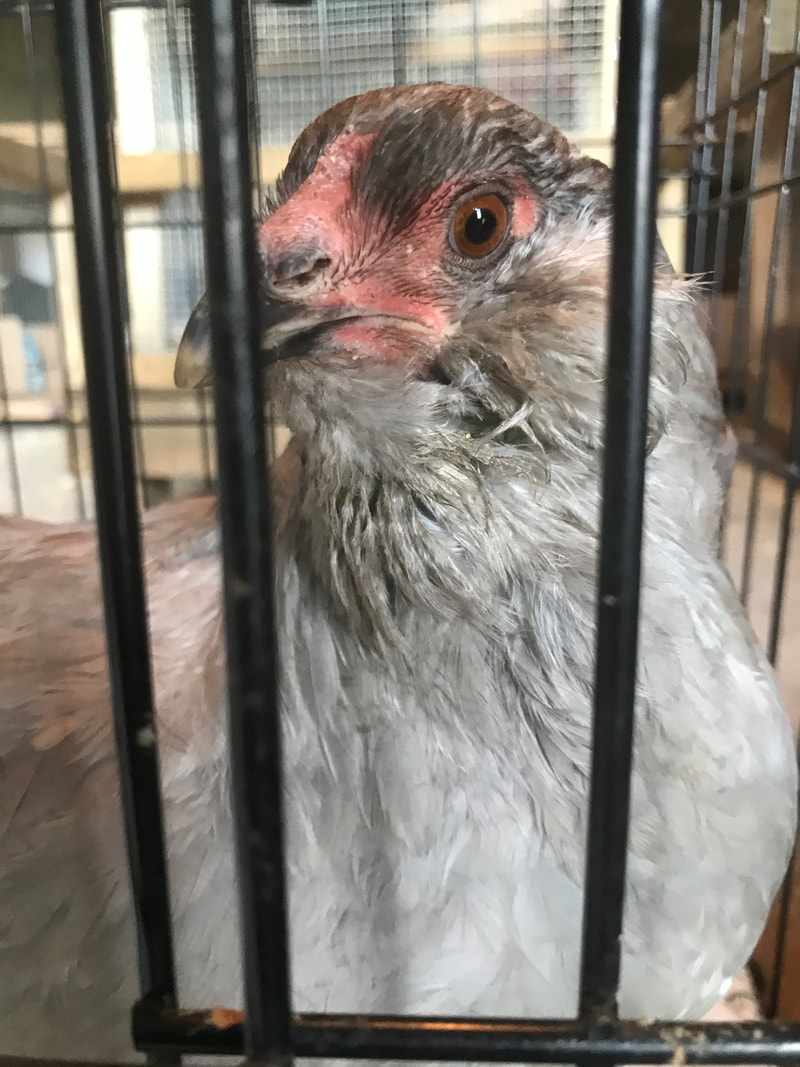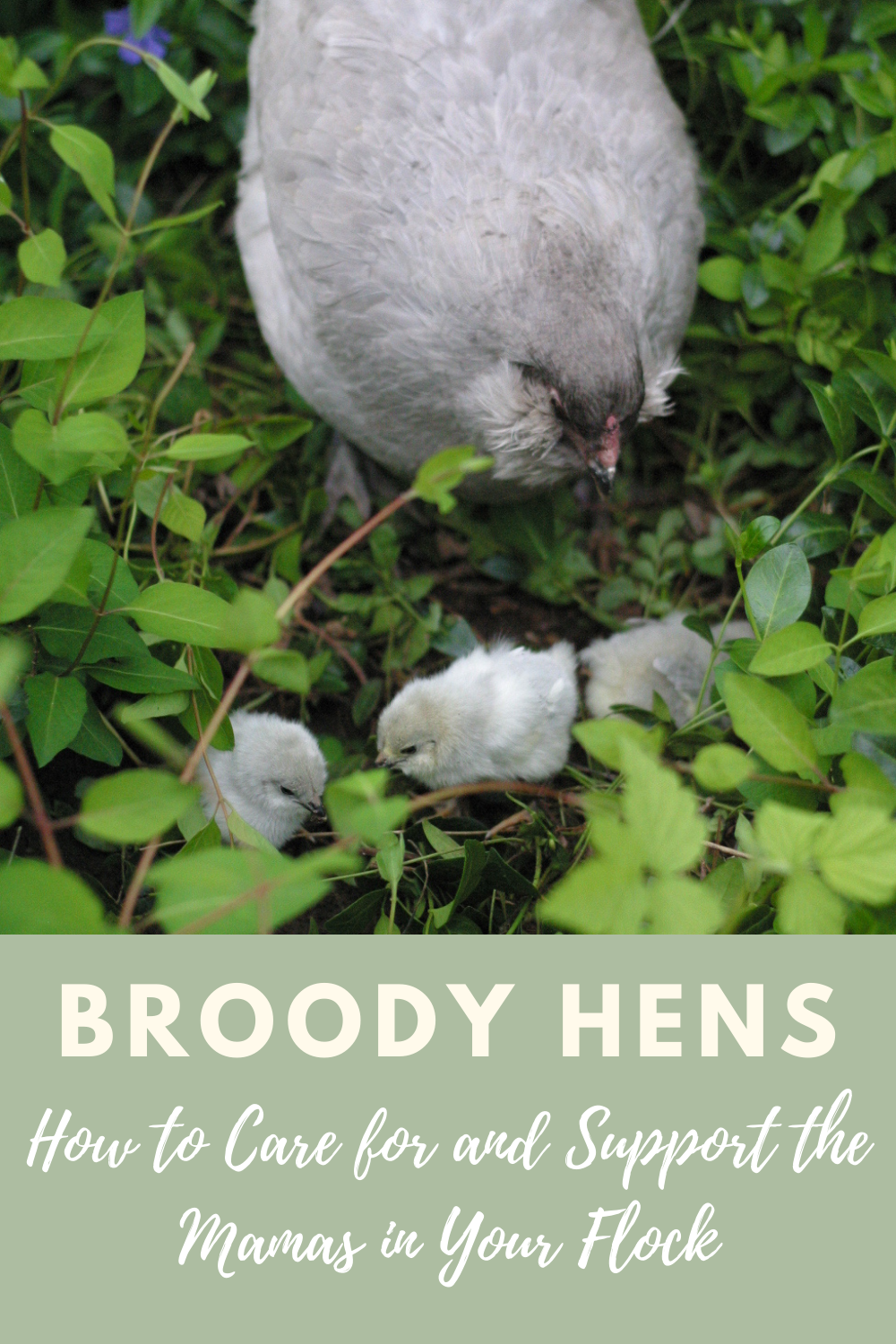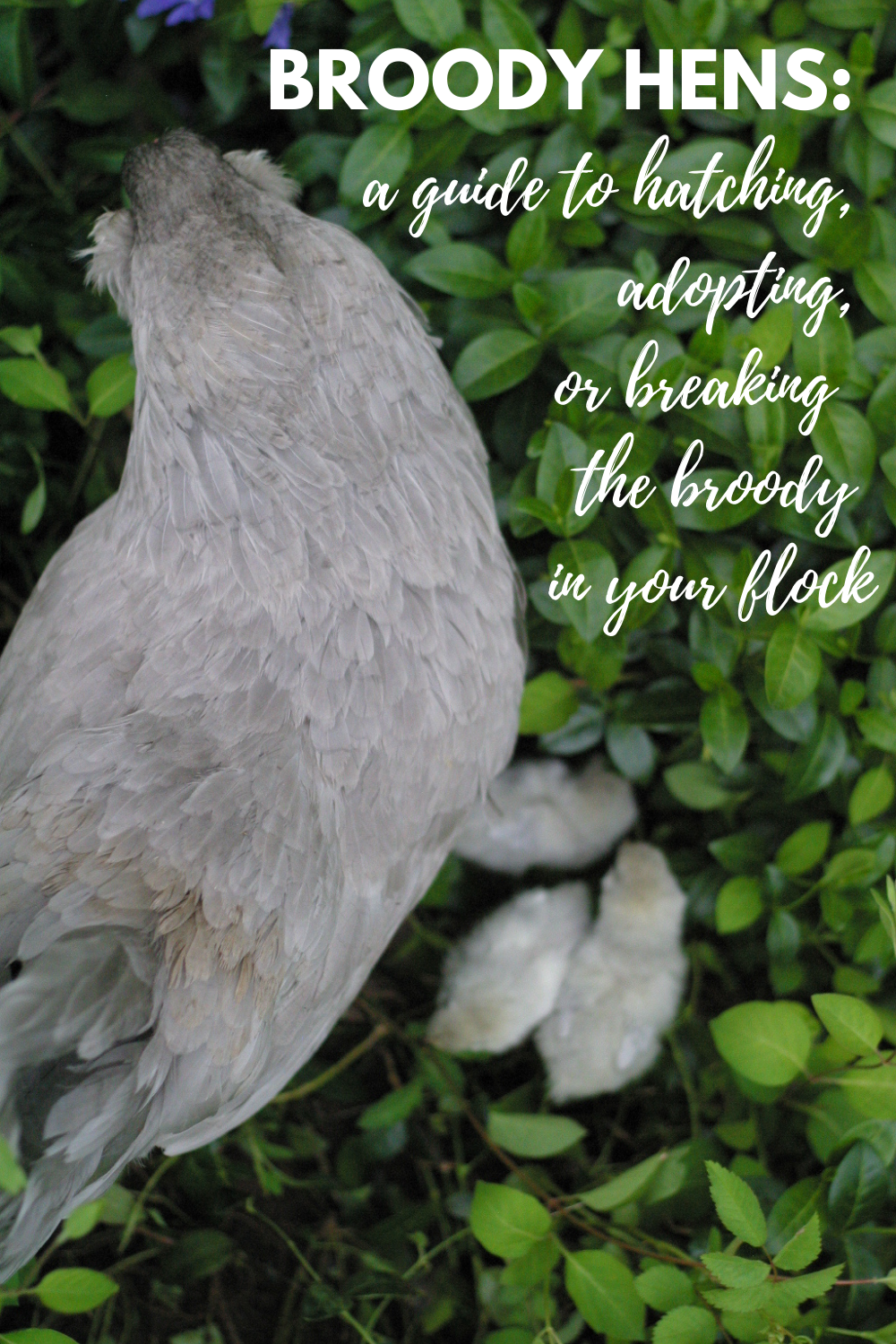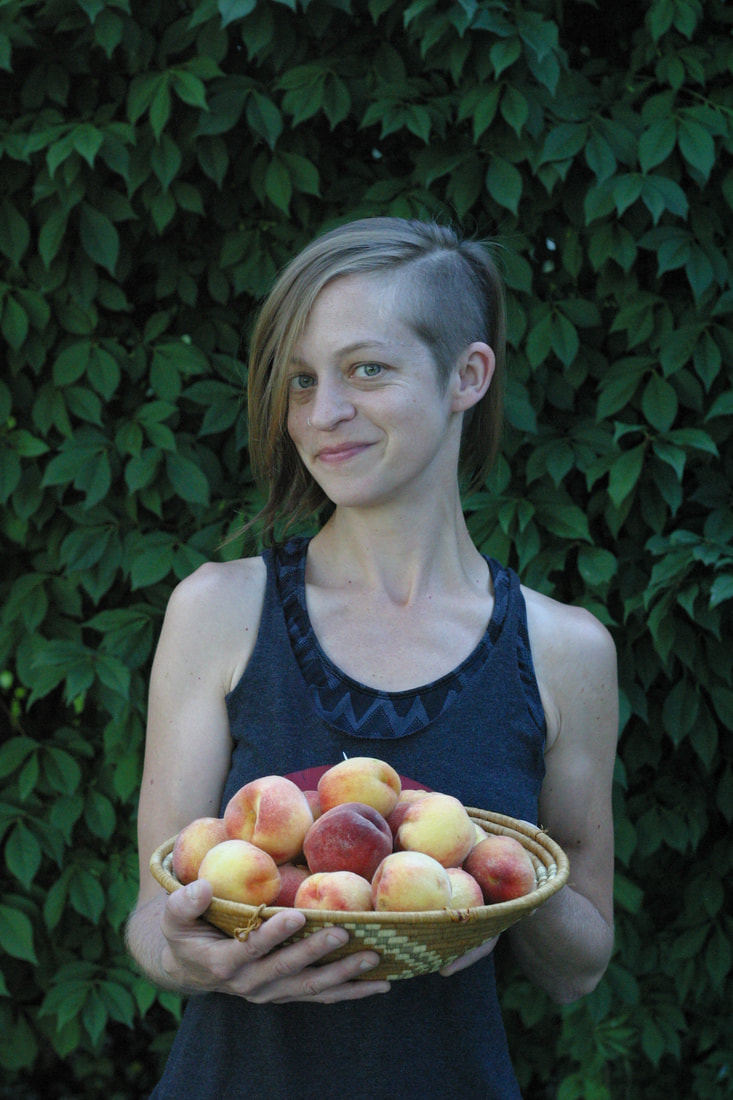|
If you’ve ever experienced a broody hen, you know they are fierce and determined as they sit on and protect their eggs. They are also a great way to expand your flock, as they will incubate, hatch, and raise chicks for you. On the flip side, she can be an unwelcome disturbance in the flock, especially if you don’t have fertile eggs or young chicks readily available. They also often need their own space, but they don’t pay egg rent. Not only that, but broodiness can put a real strain on your hen. In this post we will look at both sides of the broody coin: how to support and care for your hen while helping her become a mama, and how to break a broody if need be while minimizing stress to her. What is a Broody Hen?A broody hen is one that is ready to incubate a clutch of eggs. When a hen "goes broody" her hormones shift, she stops laying, and her entire physiology moves into hatch mode. Broodiness generally happens in the spring and summer, as it’s triggered by day length, although it can be encouraged by clutches of eggs. These hens might seem like they are in a trance, sitting on their eggs 24/7, and getting up about once a day just to poop, eat, drink, and take a quick dust bath. That trance will break, though, the second you get anywhere near their nest. If that happens, prepare for pecking and squawking as your hen defends her eggs from your perceived threat. What Are the Signs of Broodiness?
How to Hatch Eggs Under Your HenIf you hope to hatch chicks with your hen, I recommend giving her a few days to a week to settle into her broodiness and show her commitment before taking any next steps. Once you are sure your hen is committed to hatching and you are ready to give her fertile eggs (or continue with the clutch she has), then I recommend moving her to a dedicated space. If you leave your hen in the coop with other chickens, several things could happen:
However, like anything, there is more than one way to approach this scenario. Lots of folks successfully hatch under a broody while allowing her to remain in the coop with her flock. Some reasons for going this route are:
Whenever possible, we give our mama hens their own space to either hatch a clutch of eggs or adopt a group of chicks. Of course, every situation and flock is different, and folks have success with many different methods. The key is knowing and observing your flock, and intervening and changing your approach if needed. In general, though, giving your broody her own space will greatly increase her chances of success. The right broody area will help her feel safe and secure, eliminate distractions and interference, and protect your broody and her chicks from the rest of the flock until they are ready to integrate. For all of these reasons I highly recommend a separate space for your broody. Considerations for breeders: As poultry breeders, giving our broodies their own space also helps us support the rest of the flock and fulfill orders during the breeding season. A broody in the flock often takes over the favorite nesting box and makes it less fun for the other chickens to lay, decreasing productivity and annoying the other hens. In addition, the broody will collect and sit on eggs for hours, possibly inducing development and making them unsuitable for sharing with customers. The Broody BoxSome folks have dedicated broody coops with multiple stalls for broody mamas to do their thing. If that’s you--awesome! If not, check out the ideas below. Whatever you choose, know that your hen will do best in a space that makes her feel secure and comfortable: make sure it’s quiet, far from other animals and pets, predator proof, and ideally covered on the top and all sides except for one. A very small prefab or DIY coop will do the trick for one hen and a few chicks. While you may find some inexpensive prefab coops on the market, do make sure they are predator proof and make any necessary improvements. If you’ve raised chicks before, your old chick brooder box is likely the perfect space for a mama hen! We have several predator proof chick brooders on hand that we’ve also used for broodies in our garage or screened-in porch. A brooder box placed in your hen’s original coop would work too, as long as it was secure from the other adult birds. Of course, you don’t have to be fancy. Your chicken won’t be offended if she finds herself in a cardboard box. Just make sure she’s safe from predators. My friend Kelsey Jorissen of Green Willow Homestead designed a broody mama box that you can build yourself with just one sheet of plywood. The box has everything you need to support your mama hen! Get the plans here. This is not an ad, I just really like Kelsey--and purchasing these plans also supports the Chicks and Littles program created by Scarlett Salamone at Loveland Acres Farm). What to Put in the Brooder BoxGive mama everything she’ll need for herself and the chicks, when they hatch. Water: In a chick-size waterer. Perfect for one hen and safe for babies Food: Since your hen isn’t laying, you can give her chick starter. Bedding: Hay is preferable, since pine shavings can be a choking hazard to young chicks. Dust bath: a small tray of soil in her box if you can fit it will help prevent lice and mites. How to Move Your Hen to the Brooder BoxMoving a broody to her own space is a delicate operation. She needs to feel safe and secure, and a disruptive move can break her broodiness (trust me, I learned the hard way!). Successful moving tips:
Once you’ve moved your hen, give her a day to settle in without disturbance. When she’s settled on her eggs, a quick daily visit is all you need to maintain her space until hatch. Give her fresh food and water and remove her broody poop (you’ll see 1-2 big ones per day, you can’t miss ‘em) while disturbing the bedding as little as possible. Tips for Hatch Day with Mama HenIdeally, everything will go smoothly on hatch day and your hen will hatch and raise those babies, no problem. However, there is a chance she will reject some or all of her chicks, or give up on her eggs at some point in the process. If you have an incubator on hand and are so inclined, you can try to finish the hatch should the broody stop sitting on her eggs at any point. During the hatch, I don’t want to cause any added stress to my broody, so I give her plenty of space. I try to refrain from interrupting the hatch, or looking underneath her in the midst of the hatch. I always peek into her coop or broody box a few times to make sure all is well, and that no rejected or weak chicks are in need of help. Having a box with a heat plate inside, ready to go if a chick needs help, is a really good idea. Things do go awry sometimes. One of our recent broodies rejected a weak chick, moving her entire nest away from it because it could not walk. It was cold and immobile when I found it, and it did not improve when I brought it inside. Ultimately I had to cull it. The same broody had another chick with a mild case of splay leg. The chick was having a little trouble getting around under mama, so I brought it inside and fixed it up with some vitamins and a splint for its leg. It made a quick recovery and is doing well. After the hatch, your broody should teach her chicks everything they need to know. She will teach them to drink, eat, and forage, and she look out for their safety. In the days after the hatch, I like to make sure that our broody is attentive in these ways, and make sure that the babies are settled in with her each evening. How to Encourage Broodiness in HensIf you would like a hen to go broody, the best way to encourage this shift is stop collecting eggs. Allowing your hen to amass a clutch of eggs, or creating one yourself, will help those broody instincts kick in--when I tried this, it took about a week for my hen to go broody. Likewise, regular egg collection will help prevent broodiness, if that’s your preference. You can also create a clutch with golf balls or fake ceramic or plastic eggs--these will work just as well and you’ll still be able to enjoy your breakfast. We also use fake eggs to prevent egg eating, so beware! One of our hens tried to hatch a golf ball I’d left in a nest to discourage egg eating--she went full on broody and as I write is just a few days away from hatching some real eggs. A clutch of eggs--real or fake--is often all it takes. Add a cozy curtain to a nesting box with eggs for added encouragement--your hen will love the extra feeling of safety and security. How to Break Broodiness SafelyWatching a hen raise chicks is a beautiful experience, but there are also many good reasons to discourage or break broodiness in your flock. Broodiness is stressful for a hen, as she is eating, drinking, and dustbathing far less. If you don’t desire to add to your flock, or if you don’t have fertile eggs or chicks available for your broody, then you may need to intervene to stop her broody behavior. When should you break a broody? After 21 days, if chicks don’t appear, your hen’s internal clock will hopefully signal her to give up on her nest. You can wait that long if you like, but you can also apply these interventions earlier if you know you won’t be giving your hen fertile eggs or chicks. Methods to Break Broodiness
I’ll be the first to admit, I don’t have a lot of success with breaking broodies, mostly due to a lack of experience. The chance to see chicks with a mama hen never gets old, so broodies at our place generally get their way. As I write this though, we just successfully broke a hen. Both of our spare coops are full, and this particular hen was making life tough for her flock mates, discouraging them from laying their own eggs. I decided to give breaking her a go. First we tried a couple days of ice packs. That didn’t work, so I removed her from her coop. During the day, she got relaxed and pecked around in a small, safe garden enclosure. At night, she slept in a box in our garage. After about three days of this interruption in her routine, her broodiness was also disrupted. After I returned her to her coop, instead of returning to her nest, she stayed outside with her flock. You’ll know you’ve broken your hen’s broodiness once she resumes her normal, everyday, social chicken behavior. She’s rejoined the flock’s daily activities, and you no longer find her hunkered down in the nesting box for hours or days at a time. It can take a couple weeks for her to start laying eggs again, though, so don’t be alarmed. How to Introduce Chicks to Your HenAnother option is to introduce chicks to your hen for adoption. If she accepts them, she will raise them as if she hatched them herself! This is a great way to handle a broody if you’d like her to have chicks but don’t have fertile eggs of your own. It may be easier to find chicks at a feed store than fertile eggs from a farm. Or you may have chicks on hand but want to help your broody skip three weeks of sitting on a nest, and save yourself weeks of brooding them yourself! There are a few important things to keep in mind when introducing a hen to chicks for the best chance at a successful integration:
Making the introduction: To introduce the babies, gently slip each chick one by one under your broody mama. As you tuck a chick under her, remove an egg. Do this until all the chicks are under her and all the eggs are removed. There are two schools of thought about what time of day to introduce chicks. The argument for a night time introduction is the same reason I recommend moving your broody at night: she’s drowsy and relaxed, and less likely to be disturbed by the change. In the past, we’ve given chicks to broodies in the evening with great results. On the other hand, if a chick is rejected from the nest at night, it will chill and die. Introducing chicks during the day will give you more opportunities to observe and intervene should this happen. Personally, I recommend introducing chicks at night as it has worked well for us. Our one attempt at a daytime introduction did not go well for us personally (no chicks were harmed, thankfully), but I do know plenty of folks prefer this method. Regardless of when you give chicks to the broody, I recommend peeking in on your hen and her new babies regularly to make sure everything is going well. How to Introduce Mama Hen and Her Chicks to the FlockOnce your broody has hatched or adopted chicks, at some point she (and her chicks) will need to be reintegrated with the rest of the flock. When and how you choose to do this depends a lot on your initial broody set up and the space you have available for mom and chicks. If your broody remained with her flock through the incubation and hatching process, then there’s no need to move her after the hatch unless an issue arises, such as aggression from the other hens toward her chicks. If your broody hatched in her own space away from the flock, you’ll want to integrate slowly, first allowing mama hen and chicks and the rest of the flock to see each other but not touch each other. One way to do this is to place the hen and her chicks in a crate inside the coop. At first, keep the crate door closed. After a couple days, open the crate door so that mama and chicks can come and go as they please. After a few more days, remove the crate. Many chicken keepers start this process when chicks are about a week old. If you have a dedicated broody coop, you could wait to integrate when mama and babies when the chicks are about 4-6 weeks old, using the same method. This is the point when mama hen is done brooding and ready to return to her regular flock life, so it’s a natural transition point, and the chicks are bigger and hardier at this point as well. Another option is to return mama hen to her flock when she is ready at 4-6 weeks, and move the chicks to a grow out pen. Every flock has its own dynamics, and every bird has a unique temperament. However you choose to integrate mama hen and her chicks into the larger flock, make sure the transition is going well and course correct if necessary. Of course, don’t be alarmed if you see some arguing between mama and the rest of the flock as she reintegrated and the pecking order is adjusted, that’s part of chicken life. On our farm, we’ve done a number of things: adopted chicks to a hen while she stayed with her flock, reintegrated mama and babies from a separate space at 4-6 weeks, and integrated just the chicks into a grow out pen at 6 weeks. Our choices have all depended on the space we had available and what was happening on the farm at that moment in time. In all three situations, the birds did well. Do what works for you! How to Feed a Mixed Age FlockIf you are mixing age groups in your flock by integrating chicks with older birds, it is CRUCIAL that you adjust the group’s feed as well. It is not safe for chicks or young birds that aren’t laying to eat layer feed. The high calcium content in layer feed is more than their bodies can process. Feeding layer pellets to chicks can cause liver or kidney damage, and even death. Instead, give a starter/grower feed to the entire flock, and offer free choice oyster shell in a separate dish. Your laying hens will instinctively ingest the amount of oyster shell they need to maintain healthy calcium levels. It's okay to feed eggshells back to your adult hens, but make sure they have access to oyster shell as well, to get the calcium they need. It’s also important that chicks always have access to feed, as they are growing rapidly. If you previously only fed your adult flock at certain times of day, switch over to leaving feeders out all day long. Thanks for reading!I hope this post helps you care for your hens when broodiness hits, regardless of which option you choose!
How do you handle broodies in your flock?
16 Comments
Kelsey
5/18/2021 06:59:36 am
This is SUCH great info!! Thank you so much for sharing your knowledge Maeg!
Reply
Maeg
5/19/2021 04:52:49 am
Kelsey, thank you so much! :)
Reply
Lauren
6/13/2021 05:12:08 am
Great article Maeg!
Reply
GIllain
5/30/2022 06:19:53 pm
This article was super informative!
Reply
Lucinda Grigsby
8/4/2022 05:12:48 am
My broody hens refuse to nest in the boxes at floor level. They are about a foot off the ground and starting to hatch. I am concerned about the new chicks falling to the floor. There is adequate bedding on the floor but how will they get back to the nest?
Reply
Angela
8/9/2022 12:03:47 pm
I have the same question. I’m concerned the chicks will fall out of the nest about a foot & 1/2 off the ground. I hope momma will like the nest on the ground.
Reply
Sheila
8/30/2022 02:57:13 pm
We just had this happen. Our boxes are about 3.5 ft off the ground. I put a lot of bedding on the floor under the box. In the morning I had mommy and one baby on the floor. The other was still in the box. I moved it to the floor. No injuries.
Reply
Sarah
4/16/2023 06:19:56 pm
Thank you for the information!
Reply
Lindsay
5/17/2023 09:12:52 am
This is very helpful, thank you so much for sharing!
Reply
Lazy K
8/11/2023 01:53:57 pm
Great info. I let my broody sit on 1 egg. In the past I've had to take the babies to raise in my bathroom and I didn't want a whole bunch of them. This time I have the baby and broody in a large crate in the chicken run and all is going well. I now have another broody hen (2 eggs) AND I will be given a few babies in a week or so. I've been looking for information on integrating everyone. You article is very informative.
Reply
Sandy
11/18/2023 05:09:02 am
Thank you so much for this info. I refer back to it often.
Reply
Jan
4/17/2024 10:41:51 am
Oh what clear advice! Thank you.
Reply
Leave a Reply. |
Hi, I'm Maeg.Welcome to our blog! Categories
All
|
©
The Silver Fox Farm

